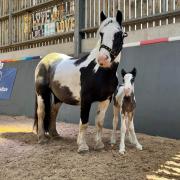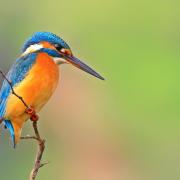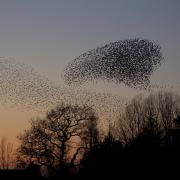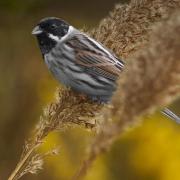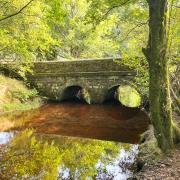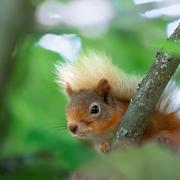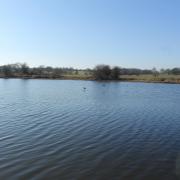The joy of spotting owls is described by The Lancashire Wildlife Trust’s Alan Wright who tells us where to find them and how to identify these elusive creatures.

When you look in bird books and see owls in the Birds of Prey section it’s always a bit of a surprise. They seem a lot more cuddly and cute than your average kestrel or sparrowhawk.
This is an image of a creature generally associated with the night, yet owls do appear late in the morning and early in the evening when they are feeding their young in spring and early summer.
One of my most exciting moments was watching short-eared owls quartering over the meadows at Lunt Meadows on Merseyside. They have made this Lancashire Wildlife Trust reserve hugely popular with bird watchers since it opened two years ago.
Lunt is also popular for barn owls, which are seen throughout the region. Our most familiar owl has a white heart-shaped face, which is actually used to direct high-frequency sounds, from mice and other smalls mammals. They are perfect dawn and dusk hunters and their almost silent flight gives their prey little chance of escape.

A survey in 1997-2000 suggested that barn owls had been pushed back to the Fylde and other coastal areas, but they have bounced back and back inland. Numbers have more than doubled and they can be found in most places, which is brilliant news. The Lancashire Bird Atlas now believes we have seven per cent of the UK total, making us a huge stronghold for the barn owl.
This ghostly bird can be seen in trees but my most exciting views have been while driving along country lanes in Chorley with a barn owl flying by the side of the car. This confirms the importance of hedgerows. Flying above hedgerows and crossing roads at that height will help them avoid most vehicles.
Our most common owl is another which makes up a huge selection of the UK population – we have four to five per cent of the UK’s tawny owls. As you wander along quiet roads towards woodland you will hear the females making a ‘too wit’ while the male answers with a ‘too woo’. They will often be sitting on a favourite perch looking out for small animals to feed on.
Tawny owls are mottled-grey or reddish-brown, with a big round head, large, dark eyes and rounded wings. Moorland, grassland and salt marshes are the best places to see the daytime fliers. Short-eared owls are not shy and will display all morning if they are feeding. They are the same size as the barn owl but their longer wings make them seem much more spectacular. The Bird Atlas says they are easy to spot because of the ‘wing shivering display of the male’ and their habit of resting on fence posts.

At Lunt, you can almost set your watch by them at this time of year while birders also to head to Bowland and the West Pennine Moors if they want to see them. Short-eared owls are mottled yellowy-brown above, paler underneath and have dark circles around their yellow eyes. Short ‘ear’ tufts give them their common name.
You are less likely to see our shy, nocturnal long-eared owls. Many are concentrated in Merseyside or nearby areas of West Lancashire, where they typically nest on farmland in small woodlands used for pheasant-rearing. Other clusters of breeding birds were found on the West Pennine Moors, in Rossendale and south of Burnley.
It’s a shame we can’t see long-eared owls as they zig-zag through clearing and over fields, swooping down and grabbing their victims. They are mottled brown with orangey-red eyes and long wings. Long ‘ear’ tufts give them their common name.
And then there is the little owl. You can often spot our smallest owl in bushes and trees, quietly scanning the area for prey or you may see a pair hanging around close to their nests in hollow trees. Little owls pair for life, they are small, brown, short-tailed with yellow eyes.

As well as being our smallest owl, they are also in quite a bit of trouble with numbers dropping by 40 per cent over the past couple of decades. Little owl was actually an introduced species, first arriving in the south in 1910 but colonising Lancashire in the 1950s.
The Lancashire Wildlife Trust will continue to improve the habitats for all of these wonderful birds and any help you can give us through membership and volunteering will benefit them and the rest of your wildlife.
Nature moments

Getting out in the morning and evening is no problem for Jenny Jones, she has her dogs Amber and Narla to lead the way.
The Lancashire Wildlife Trust Membership Officer has plenty of nature moments to recall. Her most recent was a walk near a quarry in Bamber Bridge, where she saw a barn owl silently hunting close by.
‘It was a sunny morning and I stood stock still to watch, then there was a light whistle noise as it passed me by.’
Jenny has worked for the Wildlife Trust for 18 months and her job is to recruit members to support their work.






